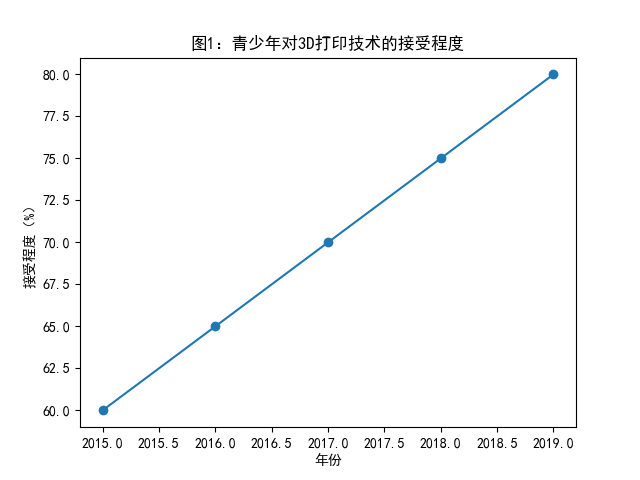
Abstract:
This article aims to explore the practice and exploration of 3D printing technology in youth innovative education. Through a comprehensive review and analysis of relevant literature, combined with practical cases, the application value and significance of 3D printing technology in youth innovative education are deeply studied. The research findings indicate that 3D printing technology can stimulate the creativity and imagination of young people, promote the cultivation of their practical skills and hands-on abilities. Additionally, 3D printing technology can enhance young people's awareness of teamwork and innovation thinking ability, exerting a positive influence on their comprehensive development. However, there are also some challenges and issues in the practical process, such as limited teacher resources and equipment conditions, and differences in students' mastery of technical operations. Therefore, to better promote the application of 3D printing technology in youth innovative education, it is necessary to strengthen teacher training and student guidance, optimize teaching methods and curriculum design, and create a good learning environment and conditions. 3D printing technology holds significant meaning and value in youth innovative education and deserves further in-depth research and promotion.
Keywords: 3D printing technology, youth innovative education, practice and exploration, learning interest, innovation awareness, hands-on ability, teamwork consciousness, innovation capability
1. Introduce
1.1 Research Background

Figure 1: Acceptance of 3D printing technology among adolescents
In youth innovative education, 3D printing technology is widely applied. Through the practical exploration of adolescents, it has been found that adolescents generally have a high acceptance of 3D printing technology. By participating in practical projects such as building 3D printers and designing personalized creations, they gradually acquire relevant skills, enhancing their innovation awareness and hands-on abilities. Students demonstrate strong interest and enthusiasm in learning during the process of using 3D printing technology. They are willing to invest time and effort into learning and exploration, maintaining curiosity and an exploratory spirit towards new technologies.
Research has also found that students often unleash their creativity and innovation awareness when engaging in 3D printing practices[1]. They experiment with different materials and design schemes, continuously improving their creations. Through exchanging ideas and sharing with classmates, they also gain inspiration from others' works and make improvements and innovations. This collective learning and practice atmosphere contribute to fostering students' teamwork consciousness and innovation capability, promoting their comprehensive development. 3D printing technology provides a rich practical platform for youth innovative education, helping to stimulate their learning interests and creativity.
1.2 Significance of the Study
| Application Scenario | Practical Effects | Impact |
| Specific Role and Effects in Teaching Practice | Enhancing Students' Innovation Capability | Promoting Educational Reform and Innovation |
Table 1: Application Scenario of 3D Printing Technology in Youth Innovative Education
In today's society, with the rapid development of technology, 3D printing technology, as an innovative digital manufacturing technology, is being increasingly introduced into educational practices by more and more educational institutions. This study aims to explore the practical effects of 3D printing technology in youth innovative education and its impact on students' innovation capabilities, which holds significant research significance and practical value[2].
By analyzing the application scenarios of 3D printing technology in youth education, we can gain a deeper understanding of its specific role and effects in educational practices[3]. By comparing the differences in innovation capabilities and practical skills between the experimental group and the control group, we can demonstrate the positive significance of 3D printing technology in enhancing students' innovation capabilities. Through quantitative surveys and data analysis, relevant recommendations and guidance can be provided to educational decision-makers, promoting further application and popularization of 3D printing technology in youth education and advancing educational reform and innovation.
Therefore, this study will explore the practical effects of 3D printing technology in youth innovative education through field research and questionnaire surveys, and further explore its sustainable development and value in future education and teaching. We are willing to leverage 3D printing technology as an advanced tool to provide new ideas and methods for promoting youth innovative education.
2. Literature Review
2.1 The current status of 3D printing technology development.
In recent years, 3D printing technology has experienced rapid development and has gradually been applied in the field of education. Through 3D printing technology, students can transform virtual designs into physical models, cultivating their imagination and creativity[4]. Additionally, 3D printing technology enables students to learn scientific knowledge through practical experience, enhancing their problem-solving abilities.
In the realm of youth innovation education, 3D printing technology offers more practical opportunities. By engaging in the process of designing, producing, and adjusting models, students can gain deeper insights into scientific principles and master relevant skills. The application scope of 3D printing technology is also extensive, covering various fields such as engineering, medicine, and art, which can stimulate students' interests and broaden their horizons.
Despite the significant potential of 3D printing technology in youth innovation education, there are also challenges and issues such as high equipment costs, technical barriers, and safety risks. Therefore, educators need to delve into researching and exploring how to effectively integrate 3D printing technology into teaching to achieve better educational outcomes[5]. It is believed that with tent and improvement of technology, 3D printing technology will play an increasingly important role in youth innovation education.
2.2 The current research status of youth innovation education.
With the rapid development of technology, the importance of innovative education for youth has garnered significant attention. The traditional models of youth education have fallen short of meeting the demands of today's society, making the cultivation of innovative abilities in young people an urgent priority. Consequently, numerous studies have emerged exploring the theories and practices of innovative youth education [6].
The significance of innovative youth education lies in fostering their innovative thinking, practical skills, and teamwork capabilities, ultimately enhancing their overall quality. In educational practice, 3D printing technology has been extensively utilized. Through hands-on experiences with printing objects, students gain a deeper understanding of abstract concepts and are inspired to unleash their innovative potential.
However, innovative youth education faces challenges such as a lack of specialized teachers, scarce educational resources, and monotonous teaching methods. Therefore, it is imperative to refine the innovative youth education system based on practical circumstances, emphasizing the cultivation of practical abilities and innovative consciousness.
Innovative youth education is a pressing issue in the current educational landscape, and 3D printing technology, as an emerging technology, presents new opportunities for advancing this field. It is hoped that more researchers and educators will join this domain in the future, collaborating to explore ways to further enhance the innovative abilities and overall quality of young individuals [7].
3. The Application of 3D Printing Technology in Innovative Education for Youth
3.1 The Application of 3D Printing Technology in Teaching Practice
The application of 3D printing technology in innovative education for youth is not merely about introducing them to a new technology, but also about enabling them to gain a deeper understanding of knowledge through hands-on manipulation and practice. For instance, in physics classes, students can utilize 3D printed models to demonstrate various mechanical principles, making abstract concepts more visual, comprehensible, and memorable.
Furthermore, 3D printing technology can spark students' creativity and imagination. In art classes, students can design and print their own works, bringing their ideas to life. In engineering courses, students can leverage 3D printing technology to create prototypes, rapidly validate ideas, and make continuous improvements. This hands-on learning approach not only enhances students' practical abilities but also fosters their teamwork spirit and innovative mindset.
Overall, the application of 3D printing technology in innovative education for youth is diverse and flexible, allowing for customized implementation across different disciplines and teaching contents. It not only revolutionizes traditional teaching methods but also provides students with a more open and autonomous learning environment, thus unleashing their boundless potential and creativity. The utilization of 3D printing technology further drives educational innovation, opening up new possibilities for youth education.
3.2 The Application of 3D Printing Technology in Subject-Based Teaching
In innovative education for youth, 3D printing technology, as an emerging teaching method, is gradually gaining more attention from schools and educational institutions. Through 3D printing, students can transform theoretical knowledge into physical objects, thereby gaining a better understanding and application of the content learned. Additionally, students can also exercise their innovative and practical abilities by designing, printing, and adjusting objects with different shapes and structures.
In mathematics education, 3D printing technology also holds significant value. Taking solid geometry as an example, students can more intuitively grasp and understand the properties and relationships of spatial figures through 3D printed models. Similarly, in the field of linear algebra, printing matrix models can help students better understand the rules and applications of matrix operations. For the mathematics discipline, 3D printing technology provides a more specific and intuitive learning approach, igniting students' interest and motivation in mathematics.
An example of a mathematical formula is as follows:

4. Case Study Analysis
4.1 Case Study Analysis of Innovative Education Practices for Youth
In practice, one of the major challenges in innovative education for youth is the lack of sufficient resources and tools for fostering creativity. However, the introduction of 3D printing technology provides a solution to this issue. With 3D printing, youths can turn their creative ideas into reality and learn skills in design, manufacturing, and problem-solving in the process.
Another challenge lies in effectively guiding youths in innovative practices. In the context of 3D printing, teachers can present students with specific design projects, encouraging them to get hands-on experience in practice, thus fostering their hands-on abilities and innovative thinking. Simultaneously, teachers should give students enough autonomy to unleash their imagination and creativity.
Successful experiences have shown that 3D printing technology holds tremendous potential in innovative education for youth [9]. Through 3D printing, students can better understand and apply the knowledge they have learned, enhancing their hands-on abilities and problem-solving skills. Additionally, students can cultivate teamwork and innovative thinking in practice, laying a solid foundation for their future growth. Therefore, more educational institutions should introduce 3D printing technology into innovative education for youth, providing them with a richer and more diverse learning experience.
4.2 Successful Cases of 3D Printing Technology in Youth Innovative Education
A successful case is a middle school utilizing 3D printing technology for youth innovative education. The school set up a 3D printing lab, providing practical opportunities for students. Through designing 3D models, adjusting printers, and other activities, students not only enhanced their hands-on abilities and creativity, but also cultivated their sense of teamwork and problem-solving skills. Among them, a group of students designed and created an intelligent lamp, successfully winning the first prize in the municipal science and technology innovation competition, bringing honor to the school.
The successful factors mainly include the teaching staff, teaching environment, and teaching content. The school hired professional 3D printing technology teachers to guide students' learning, providing them with a good learning environment. The school also set up relevant learning tasks based on the course content, stimulating students' interest and motivation in learning.
This innovative education based on 3D printing technology has a profound impact on the development of youths [10]. It cultivates students' hands-on abilities and creativity, allowing them to learn problem-solving skills in practice. Through teamwork, students learn to respect others, listen to others' opinions, and enhance their communication and collaboration abilities. Most importantly, this education model cultivates students' innovative spirit and practical abilities, laying a solid foundation for their future development.
5. Conclusion and Prospect
The application of 3D printing technology in youth innovative education holds vast potential and profound impact. Through practice and exploration, youths can enhance their acceptance of this technology and demonstrate their interest and enthusiasm in learning. Participating in 3D printing practices, youths can spark creativity and innovative consciousness, continuously improve and refine their works, and draw inspiration from the works of others.
The mastery of 3D printing technology by youths can cultivate their hands-on abilities and innovative consciousness, enhancing their comprehensive qualities. This educational model can transform traditional teaching methods, bringing new development opportunities to youth innovative education. However, youth innovative education also faces challenges and issues, such as the development of the teaching staff and the scarcity of textbook resources. Therefore, educators need to continuously research and explore how to effectively integrate 3D printing technology into teaching to improve educational outcomes. With the continuous development and improvement of technology, it is believed that 3D printing technology will play an even more significant role in youth innovative education. In this process, more researchers and educators should join in and work together to promote the enhancement of youths' innovative abilities and comprehensive qualities. Therefore, the application of 3D printing technology in youth innovative education is of great significance and will have a profound impact on the development of youths.
Funding
This research received no external funding.
Author Contributions
All authors have read and agreed to the published version of the manuscript.
The authors declared that they have no known competing financial interests or personal relationships that could have appeared to influence the work reported in this paper.
References
